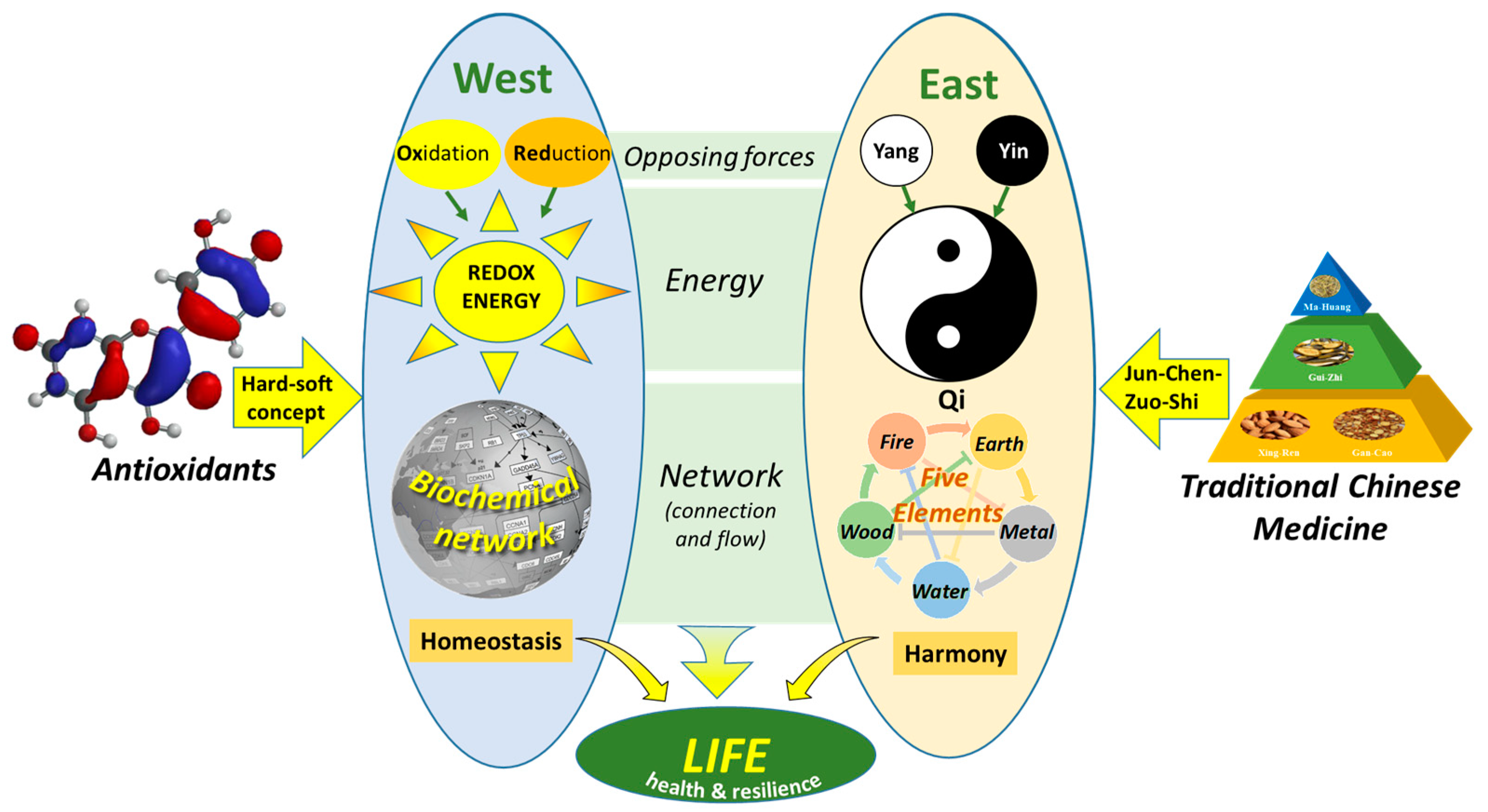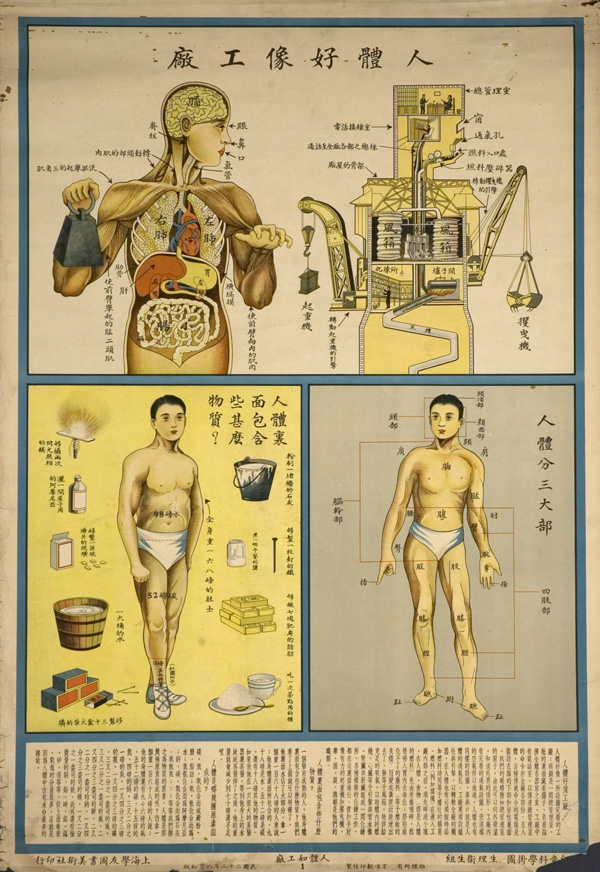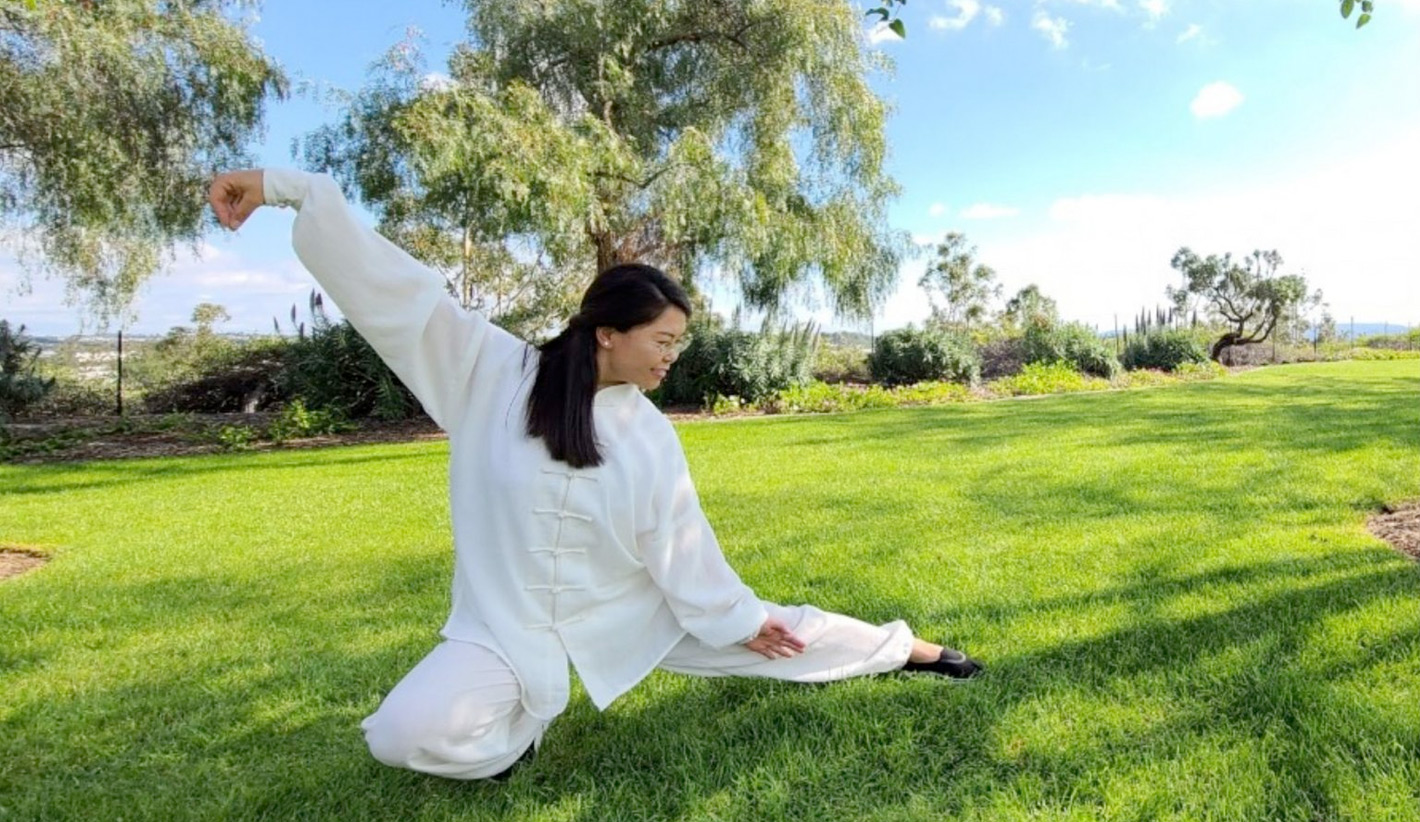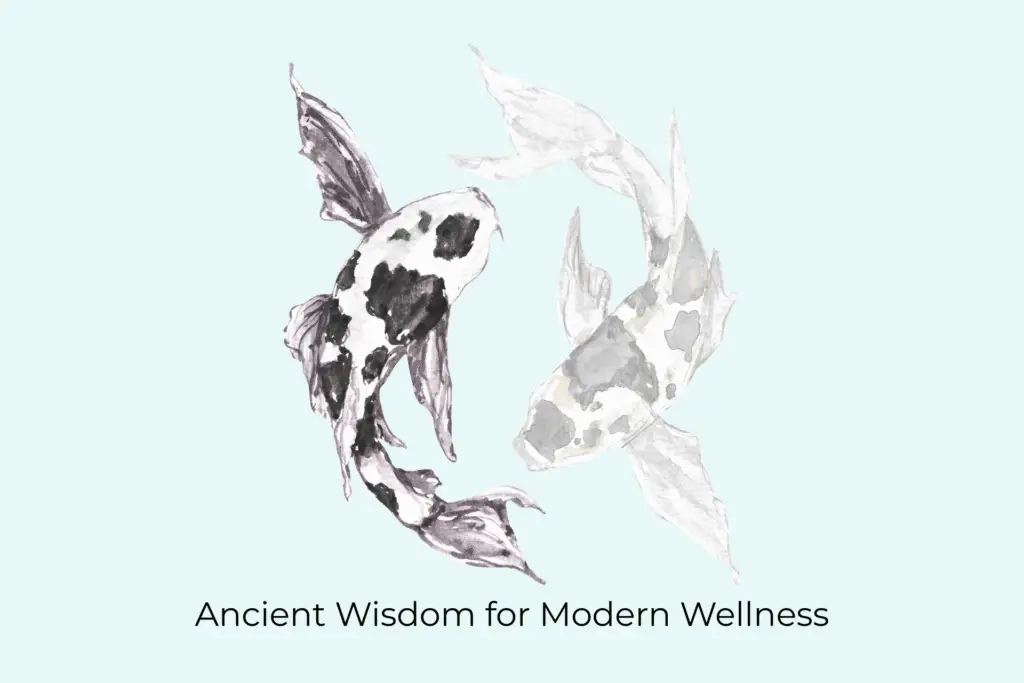Ancient Wisdom for Modern Wellness
How Traditional Chinese Medicine Offers Balance in a Chaotic World
Introduction to Traditional Chinese Medicine
In a world increasingly dominated by quick fixes and symptomatic treatments, many Americans are turning to ancient healing systems that emphasize prevention, balance, and holistic well-being. Traditional Chinese Medicine (TCM), with its 3,000+ year history, offers a comprehensive approach to health that treats the whole person—body, mind, and spirit—rather than isolating symptoms or diseases.
This time-tested system views humans as microcosms of the natural world, subject to the same forces and principles that govern nature. Health, according to TCM, is a state of harmony—both within the body and between the individual and their environment. Illness represents disharmony or imbalance that can be restored through various natural interventions.
In this comprehensive guide, we’ll explore the foundational concepts of TCM, its most beneficial practices, and how this ancient wisdom can be applied to modern wellness challenges. Whether you’re dealing with chronic stress, seeking preventative health strategies, or simply curious about complementary approaches to well-being, Chinese medicine offers valuable insights that have stood the test of time.
Growing US Interest in Chinese Wellness Practices
Despite diplomatic tensions between the United States and China, American interest in Chinese wellness practices continues to grow. According to recent trends, Traditional Chinese Medicine is gaining significant popularity as Americans seek alternatives to conventional healthcare approaches.

Connecting Western and Eastern Medicine from an Energy Perspective – Source: MDPI
This increasing interest is evident in several key wellness trends for 2025:
- Integration of TCM practices into mainstream healthcare facilities
- Rising popularity of acupuncture for pain management and stress reduction
- Growth in Tai Chi and Qigong classes across fitness centers
- Increased adoption of Chinese dietary principles and herbal remedies
- Incorporation of TCM concepts into popular wellness apps and programs
The appeal lies in TCM’s emphasis on prevention rather than just treatment, its holistic approach to wellness, and its focus on natural methods. As healthcare costs rise and chronic conditions become more prevalent, many Americans are drawn to TCM’s time-tested wisdom that treats the root causes of imbalance rather than just symptoms.
“Holistic health practices, such as acupuncture, herbal medicine, and Tai Chi, will be integrated into wellness packages to promote holistic health.” – SpaFinder’s 2025 Wellness Trends
This cultural exchange goes beyond mere trend-following. It represents a meaningful integration of complementary health approaches and a growing recognition that ancient wisdom can offer valuable solutions to modern health challenges.
The Yin-Yang Balance: Foundation of Chinese Medicine
At the heart of Traditional Chinese Medicine lies the concept of Yin and Yang—complementary opposites that exist in everything and must remain in balance for optimal health. This duality represents the foundation of Chinese understanding of the universe and human body.
Yin represents qualities that are:
- Cool and cold
- Passive and receptive
- Dark and internal
- Restful and storing
- Associated with substance
Yang represents qualities that are:
- Warm and hot
- Active and dynamic
- Bright and external
- Energetic and consuming
- Associated with function

The Yin-Yang symbol represents balance and harmony – Source: Guo An Tang TCM Clinic
In the human body, this balance is essential for health. For example:
| Body System | Yin Aspect | Yang Aspect |
|---|---|---|
| Nervous System | Parasympathetic (rest & digest) | Sympathetic (fight or flight) |
| Physical Structure | Blood, fluids, tissues | Metabolic activity, movement |
| Mental State | Calm, introspective | Active, expressive |
| Health Function | Nourishing, moistening | Warming, protecting |
Signs of Yin-Yang Imbalance
Common symptoms of Yin-Yang imbalance include:
- Excessive Yin: feeling cold, fatigue, pale complexion, sluggish digestion
- Excessive Yang: feeling hot, agitation, redness, insomnia, rapid heart rate
- Yin deficiency: night sweats, dry mouth, restlessness, afternoon heat
- Yang deficiency: cold extremities, low energy, weak digestion, mild depression
When in balance, the Yin and Yang aspects of the nervous system ensure homeostasis and overall well-being. The sympathetic nervous system (Yang) responds to danger or stress, triggering the body’s “fight or flight” response, while the parasympathetic nervous system (Yin) regulates relaxation and digestion. Modern life often tilts us toward excessive Yang activity, making practices that cultivate Yin especially valuable for today’s stress-filled world.
Understanding Qi: The Vital Energy
Central to Traditional Chinese Medicine is the concept of Qi (pronounced “chee”)—the vital life force or energy that flows through all living beings. This invisible force animates the body and is responsible for its functions. Unlike Western medicine’s focus on biochemical processes, TCM recognizes Qi as the fundamental substance that powers all physiological activities.
Qi circulates through the body along specific pathways called meridians, which connect all major organs and body systems. When Qi flows smoothly and abundantly, a person enjoys good health. When Qi becomes blocked, deficient, or imbalanced, illness can result.
Key Characteristics of Qi:
- It flows through the body along meridian pathways
- It can be strengthened or weakened by lifestyle factors
- It has both defensive (Wei Qi) and nutritive (Ying Qi) functions
- It transforms food and air into usable energy
- It maintains bodily functions and protects against external factors
Different types of Qi have specific functions in the body:
| Type of Qi | Function | Related to |
|---|---|---|
| Yuan Qi | Original or primordial Qi | Constitutional strength, genetic factors |
| Wei Qi | Defensive Qi | Immune function, protection from pathogens |
| Ying Qi | Nutritive Qi | Nourishment of tissues and organs |
| Zhong Qi | Central Qi | Digestive function, respiratory processes |
While Qi may seem like an abstract concept to those raised with Western scientific thinking, many of its effects can be observed in measurable phenomena. For instance, the immune system’s protective function aligns with Wei Qi’s role, while metabolic energy production corresponds to aspects of Ying Qi. Modern research continues to explore these connections, with studies investigating the electromagnetic and bioelectric aspects of meridian pathways.
Acupuncture & Meridians: Rebalancing Energy Pathways
Acupuncture, perhaps the best-known TCM practice in the West, involves the strategic insertion of thin needles at specific points along the body’s meridians to regulate Qi flow. These meridians—invisible energy channels connecting the body’s organs and systems—are mapped with over 350 acupuncture points, each with specific therapeutic effects.
The practice works on several principles:
- Removing blockages in Qi flow
- Balancing excess or deficient conditions
- Strengthening organ systems
- Harmonizing Yin and Yang energies
- Supporting the body’s natural healing mechanisms

Traditional Chinese Medicine Meridian Chart – Source: National Library of Medicine
Modern research has found that acupuncture stimulates the nervous system, triggering biochemical changes that influence the body’s homeostatic mechanisms. Studies have documented its effectiveness for various conditions:
Scientifically Validated Benefits of Acupuncture:
- Pain reduction (particularly for chronic back pain, neck pain, and osteoarthritis)
- Headache and migraine prevention
- Nausea and vomiting management (including post-operative and chemotherapy-induced)
- Stress reduction and anxiety management
- Improved sleep quality
- Enhanced immune function
Beyond acupuncture, related therapies in the TCM system include:
- Moxibustion: The burning of dried mugwort near acupuncture points to warm and stimulate Qi
- Cupping: Creating vacuum suction on the skin to increase blood flow and release tension
- Gua Sha: Scraping the skin with a smooth-edged instrument to promote circulation
- Tui Na: Therapeutic massage that works with the meridian system
For those new to acupuncture, it’s important to consult with a licensed practitioner who can develop a personalized treatment plan. Many health insurance plans now cover acupuncture for certain conditions, reflecting its growing acceptance in mainstream healthcare.
Tai Chi & Qigong: Moving Meditation for Body and Mind
Tai Chi and Qigong represent the movement aspects of Traditional Chinese Medicine—practices that combine gentle physical postures, breathing techniques, and focused intention to cultivate and balance Qi. These practices embody the concept of “moving meditation,” offering both physical and mental health benefits.
Qigong: Cultivating Life Energy
Qigong (pronounced “chee-gong”) translates to “energy work” and encompasses a diverse range of exercises focused on generating, circulating, and balancing Qi through coordinated movement, breathing, and awareness. As one of the oldest healing practices in Chinese medicine, Qigong serves as both a preventative health measure and a therapeutic intervention.
Tai Chi: The Supreme Ultimate
Tai Chi evolved from martial arts into a health practice characterized by slow, flowing movements performed in a sequence called a form. Often described as “meditation in motion,” Tai Chi emphasizes proper posture, relaxation, and the coordination of breath with movement. Its continuous, circular motions promote balance, flexibility, and mindfulness.

Tai Chi Practice – Source: UCI Susan Samueli Integrative Health Institute
Research-Backed Benefits of Tai Chi and Qigong:
- Improved balance and reduced fall risk, especially in older adults
- Enhanced cardiovascular health with lowered blood pressure
- Reduced stress and anxiety levels
- Better sleep quality
- Increased physical energy and stamina
- Stronger immune function
- Relief from chronic pain conditions
- Improved cognitive function and mental clarity
The Harvard Medical School has recognized Tai Chi as “medication in motion,” highlighting its comprehensive health benefits. Both practices are accessible to people of all ages and fitness levels, with modifications available for those with physical limitations.
“According to many studies, the benefits of qi gong and tai chi include better sleep, improved mood, increased physical energy, more complete rest, more clarity and focus, and reduced depression, stress and anxiety.”
– Piedmont Healthcare
Unlike high-intensity workouts that deplete energy, these practices are energizing yet calming. They represent a sustainable approach to fitness that nourishes rather than depletes—making them particularly valuable for those recovering from illness or managing chronic conditions.
Chinese Food Therapy: Nourishment as Medicine
In Traditional Chinese Medicine, diet is considered a primary therapeutic approach, embodied in the principle that “medicine and food share a common origin” (藥食同源, yào shí tóng yuán). Food therapy, or “shi liao” (食疗), uses the energetic properties of foods to maintain health, prevent illness, and assist in healing.
Unlike Western nutritional approaches that focus primarily on calories, macronutrients, and vitamins, Chinese food therapy considers how foods affect the body’s energy balance. Each food is classified according to its:
- Temperature quality (hot, warm, neutral, cool, or cold)
- Flavor (sweet, sour, bitter, pungent, salty)
- Direction of energy movement (ascending, descending, floating, sinking)
- Specific organ systems it influences

Traditional Chinese Medicine Food Therapy – Source: Amazon
Food Energetics and Balance
Foods are classified according to their energetic temperature, which affects how they influence the body:
| Energy | Effect on Body | Example Foods |
|---|---|---|
| Cold/Cooling | Clear heat, reduce inflammation | Watermelon, cucumber, lettuce, mung beans |
| Neutral | Balanced, gentle regulation | Rice, most grains, many vegetables |
| Warm/Warming | Stimulate circulation, boost metabolism | Ginger, cinnamon, chicken, oats |
| Hot | Strongly stimulate, dispel cold | Chili peppers, alcohol, lamb |
Seasonal Eating: A Chinese Approach
Chinese food therapy emphasizes eating according to the seasons:
- Spring: Slightly warming, pungent foods that support the liver (greens, sprouts)
- Summer: Cooling foods that nourish the heart (watermelon, cucumber, mint)
- Late Summer: Neutral, sweet foods that support the spleen (millet, sweet potato)
- Fall: Foods that moisten and support the lungs (pears, apples, white fungus)
- Winter: Warming foods that nourish kidney energy (bone broths, walnuts, black foods)
Chinese dietary therapy also emphasizes:
- Eating according to your constitution and current imbalances
- Consuming mostly cooked foods, which are easier to digest
- Including all five flavors in the diet for balance
- Eating mindfully and chewing thoroughly
- Avoiding excessive cold foods and drinks, which can dampen digestive fire
Modern nutritional science is increasingly validating many traditional Chinese dietary principles. For example, the emphasis on bone broths aligns with current understanding of collagen’s benefits, while the recommendation to eat seasonally promotes nutritional diversity and environmental sustainability.
Chinese Meditation Practices: Cultivating Inner Stillness
Chinese meditative traditions have developed over thousands of years, offering profound approaches to mental cultivation and spiritual development. Unlike some Western adaptations of mindfulness that focus primarily on stress reduction, traditional Chinese meditation practices aim at deeper transformations of consciousness and energy.
Taoist Meditation
Taoist meditation practices focus on harmonizing with nature’s rhythms and cultivating life energy. These include:
- Zuowang: “Sitting and forgetting” – letting go of thoughts and attachments
- Neiguan: “Inner contemplation” – turning awareness inward to observe internal processes
- Embryonic Breathing: Subtle breathing techniques for energy cultivation
- Inner Smile: Directing positive energy to internal organs
Chan (Zen) Meditation
Chan meditation, which later spread to Japan as Zen, emphasizes direct insight into one’s true nature through:
- Silent Illumination: Open awareness without specific focus
- Koan Practice: Contemplating paradoxical questions to transcend logical thinking
- Breath Counting: Focusing on the breath while counting cycles

Chi Kung and Meditation – Source: The Art of Meditation
Modern Research on Chinese Meditation
Scientific studies have found that regular practice of these meditation techniques can lead to:
- Increased grey matter in brain regions associated with emotional regulation
- Reduced activity in the default mode network, associated with mind-wandering and rumination
- Lower levels of cortisol and inflammatory markers
- Improved attention and cognitive performance
- Enhanced immune function
Chinese meditation differs from many Western approaches in several key ways:
| Chinese Meditation Emphasis | Common Western Approach |
|---|---|
| Energy cultivation and circulation | Primarily mental focus and relaxation |
| Integration with physical practices (Qigong, Tai Chi) | Often practiced separately from physical exercise |
| Cultivation of virtues and character | Focus on stress reduction and psychological benefits |
| Connection to nature and cosmos | More individual-centered approach |
As mindfulness continues to gain popularity in the West, there’s growing interest in these more traditional approaches that offer a holistic framework for human development beyond simple stress management. Chinese mindfulness practices are increasingly being adapted for various settings, from corporate wellness programs to clinical interventions for anxiety and depression.
Eastern vs. Western Medicine: Different Paradigms, Complementary Approaches
Traditional Chinese Medicine and conventional Western medicine represent different paradigms of understanding health and treating illness. Rather than viewing them as competing systems, many practitioners and patients now recognize their complementary nature—each with unique strengths and limitations.

Integration of Eastern and Western Medical Approaches – Source: MDPI
Key Philosophical Differences
| Traditional Chinese Medicine | Western Medicine |
|---|---|
| Holistic approach treating the whole person | Specialized approach focusing on specific body systems |
| Emphasis on prevention and maintaining balance | Focus on diagnosis and treatment of disease |
| Views symptoms as part of pattern disharmony | Treats symptoms and specific pathologies |
| Energy-based understanding (Qi, meridians) | Material-based understanding (biochemistry, anatomy) |
| Individualized treatment based on constitution | Standardized protocols based on diagnosis |
| Natural interventions with few side effects | Powerful interventions with potential side effects |
Integrative Approach Benefits
Combining Eastern and Western medicine can offer several advantages:
- Addressing both immediate symptoms and underlying imbalances
- Reducing side effects of conventional treatments
- Improving treatment outcomes for complex conditions
- Enhancing patient quality of life during treatment
- Providing options when conventional approaches have limitations
- Empowering patients with self-care practices
Where Each Approach Excels
Western medicine typically excels in:
- Emergency situations and acute care
- Surgical interventions
- Infectious disease management
- Advanced diagnostics
- Treatment of severe pathologies
Traditional Chinese Medicine often excels in:
- Chronic condition management
- Preventative care
- Enhancing recovery and rehabilitation
- Addressing functional disorders
- Promoting overall wellbeing and quality of life
“Western medicine treats symptoms, while Eastern medicine refers to methods that focus on the person, not just the symptoms.”
– Medical News Today
The growing field of integrative medicine represents a bridge between these approaches, combining the technological advances and scientific rigor of Western medicine with the holistic wisdom and natural healing methods of Eastern traditions. This integration offers patients the best of both worlds—powerful interventions when needed and gentle, supportive care for prevention and recovery.
How to Incorporate TCM Into Your Life
Integrating Traditional Chinese Medicine principles into modern life doesn’t require a complete lifestyle overhaul. Here are practical ways to begin exploring this ancient wisdom for your health and wellness:
Starting with Movement
- Take a beginner Tai Chi or Qigong class (many are available online)
- Start with just 5-10 minutes of gentle movement daily
- Focus on coordinating breath with movement
- Try simple Qigong practices like “Lifting the Sky” or “Eight Pieces of Brocade”
- Join community practice groups in parks or community centers
Dietary Adjustments
- Include more cooked vegetables in your meals
- Add warming spices like ginger, cinnamon, and turmeric in cold weather
- Reduce cold and raw foods, especially in winter
- Eat seasonally and locally when possible
- Try congee (rice porridge) for breakfast with gentle additions
- Include all five flavors (sweet, sour, bitter, pungent, salty) regularly
Mind-Body Practices
- Practice mindful breathing for 5 minutes daily
- Try the “Inner Smile” meditation, directing positive energy to internal organs
- Create brief moments of stillness throughout your day
- Connect with natural cycles by observing sunrise/sunset
- Practice gratitude to cultivate positive Qi
Professional Support
- Consult with a licensed acupuncturist for a constitutional assessment
- Consider seasonal “tune-up” acupuncture sessions
- Learn about Chinese herbs from qualified practitioners
- Explore TCM approaches to address specific health concerns
- Inquire about insurance coverage for acupuncture and other TCM therapies
Daily Rhythm Recommendations
TCM emphasizes living in harmony with natural cycles. Consider these adjustments:
- Rise with or shortly after the sun
- Eat your largest meal at midday when digestive energy is strongest
- Take a brief rest after lunch if possible
- Wind down activities as evening approaches
- Avoid screen time and stimulating activities before bed
- Aim to be asleep by 10-11 PM for optimal organ regeneration
Remember that consistency matters more than intensity. Small, regular practices integrated into daily life can produce significant benefits over time. The TCM approach is about gradual harmonization rather than dramatic interventions—a gentle but powerful path to improved health and wellbeing.
Conclusion: Ancient Wisdom for Modern Challenges
As we navigate the complexities of modern life—with its unprecedented stress levels, environmental challenges, and lifestyle-related health issues—the wisdom of Traditional Chinese Medicine offers valuable insights and practical solutions. Far from being merely historical curiosities, these ancient approaches address timeless human needs for balance, prevention, and holistic wellbeing.
The growing interest in TCM among Americans reflects a broader recognition that health involves more than just the absence of disease. It encompasses physical vitality, mental clarity, emotional balance, and spiritual connectedness—dimensions that Chinese medicine has always addressed as an integrated whole.
By understanding the foundational concepts of Yin-Yang balance and Qi, exploring practices like acupuncture, Tai Chi, and Qigong, and adopting principles of Chinese dietary therapy and meditation, we can access a comprehensive system of self-care that complements modern medical approaches.
The beauty of TCM lies in its adaptability and personalization. Whether you’re dealing with specific health challenges or simply seeking to optimize your wellbeing, these practices can be tailored to your unique constitution, current condition, and lifestyle.
As East meets West in our increasingly interconnected world, we have an unprecedented opportunity to create truly integrative approaches to health—combining the best of scientific advances with time-tested traditional wisdom. This synthesis offers not just better health outcomes, but a more balanced, mindful, and harmonious way of living in our complex modern world.
Key Takeaways:
- TCM offers preventative approaches that address root causes rather than just symptoms
- Balancing practices like Tai Chi and Qigong provide accessible ways to manage stress and build vitality
- Chinese dietary wisdom emphasizes harmony with seasons and individual constitutions
- Traditional meditation practices cultivate both mental clarity and energy balance
- The integration of Eastern and Western approaches provides a more comprehensive healthcare model
- Small, consistent changes aligned with TCM principles can yield significant benefits over time
References & Further Reading
- Harvard Health Publishing. (2022). “The Health Benefits of Tai Chi.” Harvard Medical School. https://www.health.harvard.edu/staying-healthy/the-health-benefits-of-tai-chi
- Health Matters. (2023). “How Qigong and Tai Chi Benefit the Body and Mind.” New York-Presbyterian. https://healthmatters.nyp.org/how-qigong-and-tai-chi-benefit-the-body-and-mind/
- Jahnke, R., Larkey, L., Rogers, C., Etnier, J., & Lin, F. (2010). “A Comprehensive Review of Health Benefits of Qigong and Tai Chi.” American Journal of Health Promotion. https://pmc.ncbi.nlm.nih.gov/articles/PMC3085832/
- Medical News Today. (2022). “Western vs. Eastern medicine: What to know.” https://www.medicalnewstoday.com/articles/western-vs-eastern-medicine
- Science Direct. (2017). “Food therapy and medical diet therapy of Traditional Chinese Medicine.” Chinese Herbal Medicines. https://www.sciencedirect.com/science/article/pii/S2352939317300829
- Chenot. (2024). “The Importance Of Yin & Yang Balance In Mind And Body.” https://www.chenot.com/blog/2024/05/02/the-importance-of-yin-yang-balance-in-mind-and-body/
- SpaFinder. (2024). “2025 Wellness Trends.” https://www.spafinder.com/blog/spa/2025-wellness-trends/
- National Library of Medicine. “Traditional Chinese Medicine.” https://www.nlm.nih.gov/hmd/topics/chinese-traditional/index.html
- Piedmont Healthcare. “The health benefits of tai chi and qi gong.” https://www.piedmont.org/living-real-change/the-health-benefits-of-tai-chi-and-qi-gong
- Harvard Health. (2022). “Traditional Chinese diets: A template for healthy eating habits.” https://www.health.harvard.edu/heart-health/traditional-chinese-diets-a-template-for-healthy-eating-habits


